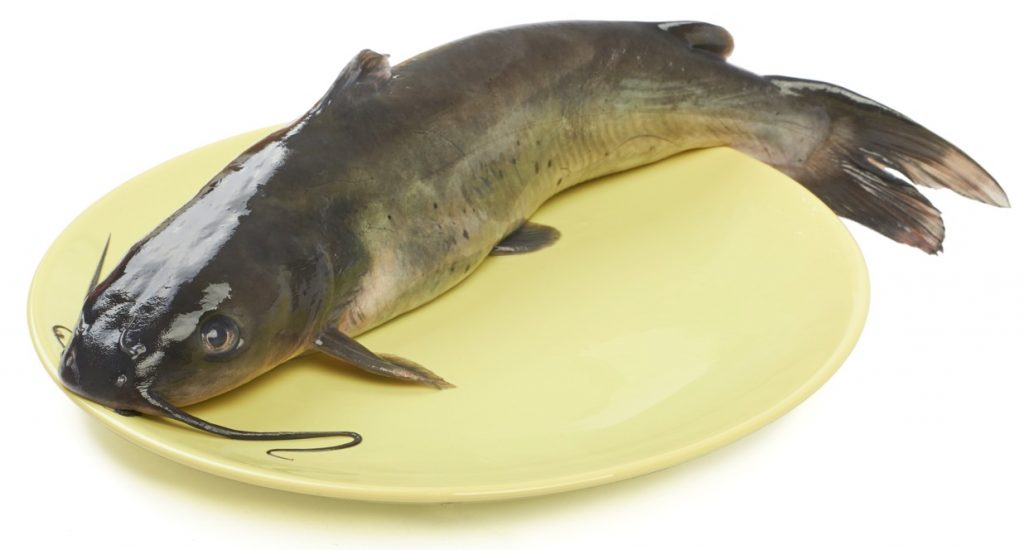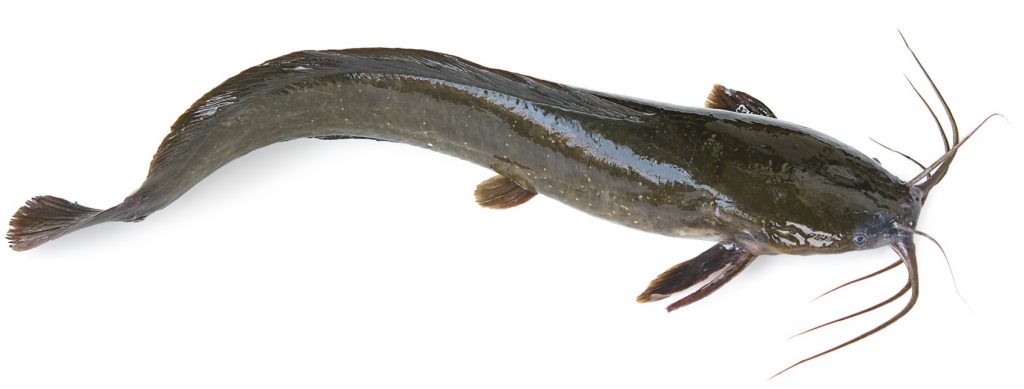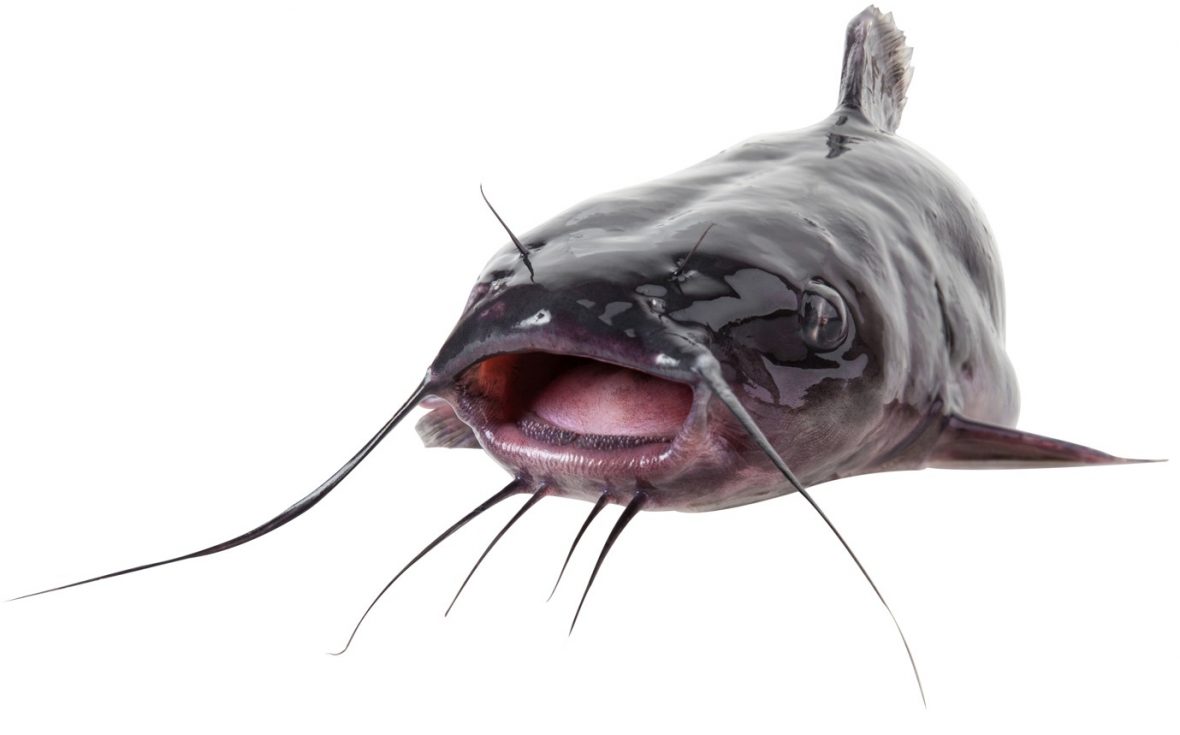Catching Channel Catfish
The Channel Catfish is not only the official state fish of Kansas, Missouri, Iowa, Nebraska, and Tennessee, it is the most fished catfish species with millions “channel cats” caught each year.
Unlike their larger cousins, flathead and blue catfish, channel catfish can be found anywhere east of the Rocky Mountains, including Canada and Mexico.
One of the smaller species of catfish, channel cats rarely top 20 pounds, although occasional monsters of 40-50 pounds can be landed.
With that in mind, many anglers go for numbers rather than size when fishing for channel catfish.
Experienced anglers claim to haul in up to 100 per day, making them a fun and exciting fish to target.

Best Channel Catfish Rods and Reels
Channel catfish are smaller but still strong. The best rods are seven to seven and a half feet long.
Longer rods allow anglers to cast further and then finesse the line. Longer rods also allow more control for flipping and pitching lures to the exact spot desired.
Look for rods with a solid backbone that can manhandle the larger fish, but light enough to be sensitive.
The Chad Ferguson Signature Series Catfish Rod is an excellent choice made specifically for this type of fish.
Ugly Stick also makes a quality catfish rod that is ideal for catching anything under 30 pounds.
While spinning reels will work, for channel catfish a baitcaster is really the only way to go.
Baitcaster reels have more reliable drag and allow for further, more accurate casting.
Quality reels like the KastKing Rover Round and the Okuma Classic CLX Levelwind are perfect for those looking to hook a lot of cats while not breaking the bank on gear.
Fill the reel with 10–12-pound monofilament line. Stren Catfish Mono is a great choice, as is Whisker Seeker line. Both are made to be catfish specific.
Catfish are not shy about line color, so a brightly colored line with bobbers will help any angler keep an eye on their line and catch more channel cats.

The Right Hook is Essential
Like bass, channel cats will swallow hooks that are too small while avoiding ones that are too big.
Hooks that are between 4 and 6 should do the trick nicely. For even more security, a treble hook will keep the fish where it needs to be while avoiding a swallow.
A savvy angler will have a variety of hooks on hand. That way, they can shift to smaller or larger as the catch requires.
Keep Some Stink in The Drink
Those new to catfishing might joke about stink bait, but the experienced angler knows that channel cats love the stink.
Channel catfish have the keenest sense of smell of any freshwater fish. Scientists estimate they can smell a dissolved piece of bait more than 15 feet away.
One report suggests a channel cat can track an ounce of bait in 100 million gallons of water. So for those wanting to catch channels, smelly bait is a must.
Prepared bait is always a good choice when going after channel catfish.
Channels hunt by smell, detecting even small bits of prepared bait that have dissolved in the water.
The easiest, and cleanest, method is buying some punch bait. Bee’-Jay’s Catfish Dough Bait is a channel catching mainstay.
Other good dip baits include Berkley Gulp! and Junnie’s Wicked Sticky Catfish Dip.
When and Where to Catch Channel Catfish
Pay no attention to the “common wisdom” about catfish. They can be caught at night, in the day, and just about any time during the year.
Channel catfish can be found in pools, rivers, streams, cutbanks, and around any submerged materials.
Look for covered areas. Channels love cover and will often mass together in small, covered areas.
Docks, lilies, submerged rocks, trees, and brush are all areas in which channel catfish love to hide. And with channels, where there’s one hiding there are usually many, many more.
Summer is the prime time for channel cats, but that should not stop the avid angler from targeting them throughout the year.

Night or Day
Most anglers go after channels at night because it is cooler and as the water cools the channels move into shallower water. Since catfish are scent hunters, they have no problem hunting at any time or in any clarity of water.
Daytime fishing is easier for the angler, especially when fishing from a boat.
Murky waters are fine as channels will forage in dark waters.
Since channels will follow the temperature, anglers should start in deeper water and move towards the shallows until the channels are found.
The bottom line is, unlike other catfish, channel cats feed day or night, in fast moving water and slow-moving water.
Set The Hook and Fight
Unlike other types of catfish, channel cats tend to strike bait softly. This is one reason to use a longer, more sensitive rod.
Instead of waiting for a hard strike, with channels the angler needs to feel the soft strike. Bobbers and lines set in a Carolina Rig will help.
Once the strike begins, the fisher should set the hook and then let the fight begin.
While smaller than their cousins, channels are known for putting up a terrific battle. Anglers should be prepared to fight it out, and not always expect to win.

Fresh, Fried, and Flavorful
Few meals are more Southern American than a catfish fry. Especially during the summer, fish fries are a rule in the Southern USA.
Channels are no exception to that rule.
Whether pan seared, blackened, or deep fried with hush puppies and coleslaw, channels are a tasty fish worth adding to the menu.
With a flesh that is firmer than other whitefish, channels can also be cooked in a larger variety of ways, including stews, chowders, and fried fillets.
Moist, sweet, and with a milder flavor than other species, channel catfish are often considered the best tasting catfish and command pride of place at many Fourth-of-July tables.
Learn more about catfish fishing and some great catfishing tips, too.







